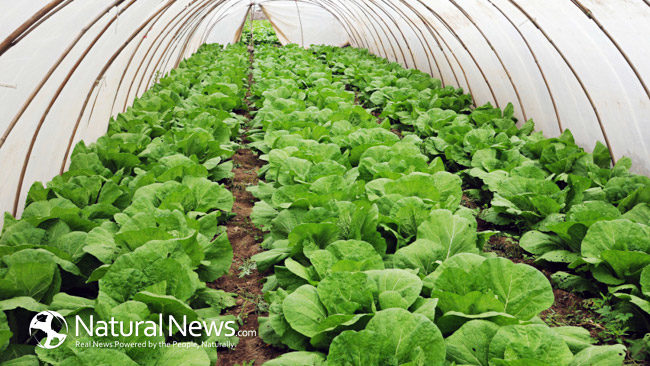Most people assume that they need to have a lot of land in order to grow organic vegetables, but the reality is that there are many methods you can use to bring produce to life inside your home. Additionally, anyone who has enough room for a shed or a small garage on their property can build a small greenhouse to provide a good shelter for their organic produce without utilizing a lot of their personal indoor space.
What Type of Plants Can Thrive Indoors?
Depending on how much room you have available, you can successfully grow a diverse mixture of organic food and spices indoors, including tomatoes, oregano, lettuce, bush beans and even corn. The trick is to carefully allot the proper amount of space and exposure to sunlight.
Alternatively, you can utilize a light deprivation greenhouse on your property to dramatically reduce your energy costs and increase your total number of annual harvests. Regardless of which exact technique you choose, your primary concern should be keeping the plants healthy enough to come to fruition. With indoor gardening, it is easier than ever to prevent organic crops from becoming damaged by pests.
Tips for Getting Started
Before you begin, you need to determine which vegetables and herbs you are most interested in growing indoors. Keep in mind that each plant has its own specific needs. For example, if you want to grow tomatoes, you will need to give each plant its own pot and make sure that the roots are a minimum of one inch below the soil line. Additionally, tomato plants will need a container of at least 8” in diameter, along with a rod for easy tying. Indoor tomatoes are the most successful when they receive regular watering and have sunlight exposure from a southern facing window.
Be careful when you select the container that your plants will grow in because a miscalculation could ruin your plans. Corn needs a larger growing space than many people can dedicate to an indoor garden, but if you have enough room available, then this is a great way to reduce your reliance on supermarkets. A proven method for getting good results involves burying multiple corn seeds an inch deep around the entire diameter so that you will have many options to choose from. Once the corn begins to grow, you will need to remove all but the strongest plants, and this should leave you with five or fewer survivors. Be sure to keep the soil moist at all times for the best results.
Advantages to Growing Your Own Organic
The FDA requires products to be created using 95 percent or higher organic ingredients or growing practices to receive the organic seal. However, this still leaves some room for non-organic practices, so many people enjoy cultivating their own vegetables and herbs to avoid the potential for any type of harmful pesticide contamination. There is also a higher cost associated with most organic food products, and consumers can avoid the average markup of 47 percent by doing everything for themselves. As an added bonus, having your own organic indoor garden or greenhouse will enable you to reduce your carbon footprint by eliminating the need to go to a grocery store on a regular basis for fresh produce.
Ultimately, anyone who has the time, space and patience to garden can receive good results from the indoor or outdoor approach. However, there are many benefits associated with choosing to grow plants indoors, including gaining the ability to have better control over the growing environment. After all, you can prevent your plants from being pummeled by a storm or eaten by pests, and you can create the right soil mixture for each container. It is also a nice perk that an indoor garden can provide a viable food source for your family all year long instead of being forced to rely on fickle outside temperature fluctuations.
Sources: gardeningknowhow.com, fullbloomhydroponics.net, mayoclinic.org, consumerreports.org





